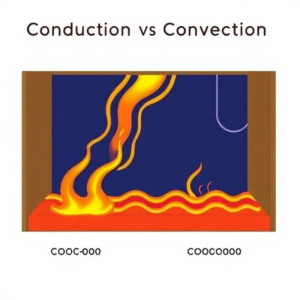What is Radiation?
Radiation is the transfer of energy through space in the form of waves or particles. Unlike sound or water waves, radiation doesn’t require any material medium (like air or water) to travel through. It can move through empty space, such as the vacuum of space, allowing energy to travel vast distances. For example, the heat from the Sun reaches Earth through radiation.
Radiation is how energy moves across distances, whether it’s in the form of heat, light, or other types of waves or particles. You experience radiation daily, such as feeling warmth from the Sun or a fire, or seeing light.

Key Points to Understand Radiation
- Energy Transfer:
Radiation is the process by which energy is transferred from one place to another, either in the form of electromagnetic waves (like light and heat) or particles (like protons and neutrons). This energy can travel through air, space, or some materials. - No Need for a Medium:
Unlike sound or water waves, radiation doesn’t require any material (like air or water) to travel through. It can move through a vacuum—empty space. For example, the Sun’s heat reaches Earth through space via radiation.
Types of Radiation
- Heat Radiation (Infrared Radiation):
Heat radiation is energy emitted by objects that are warm or hot. For example, the warmth you feel from the Sun or from a fire is heat radiation, usually in the form of infrared radiation. You can’t see infrared radiation, but you can feel it as heat. - Light Radiation:
Visible light is a type of electromagnetic radiation that we can see with our eyes. It’s just one part of a broader spectrum of electromagnetic radiation, which includes radio waves, microwaves, ultraviolet light, and more. - Other Types of Radiation:
- Ultraviolet (UV) Radiation: UV radiation is the type of radiation that can give you a sunburn. It’s invisible to the human eye, but it has enough energy to damage skin cells.
- X-rays: X-rays are a form of high-energy radiation used in medical imaging to view the inside of the body.
Examples of Radiation
- The Sun’s Heat:
When you stand in the sunlight, you feel warmth from the Sun. This is radiation—energy from the Sun travels across space and reaches Earth in the form of electromagnetic radiation. The Sun emits both heat (infrared radiation) and light that warms you up. - A Heater in Your Room:
If you sit near a heater, you feel warmth even though you’re not in direct contact with it. This warmth is heat radiation traveling through the air and reaching your body. - Fire:
The warmth you feel from sitting by a campfire is also radiation. The fire emits infrared radiation, which moves through the air and warms you up.
How Does Radiation Work?
- Electromagnetic Waves:
Many forms of radiation, such as light, radio waves, and microwaves, happen through electromagnetic waves. These waves carry energy and travel at the speed of light. Electromagnetic radiation can move through space and through materials (like glass or air). - Particles:
Some types of radiation, like radioactive decay, involve the emission of particles (such as protons, neutrons, or alpha particles) from a source. These particles can travel through space and transfer energy. For example, radioactive materials release particles that can be detected by special instruments.
Summary
- Radiation is the transfer of energy through space via waves or particles, and it doesn’t need any material to travel through.
- It can travel through a vacuum, making it unique compared to other forms of energy transfer like sound or conduction.
- Heat radiation (infrared) and light radiation are the most common types of radiation we experience.
- Other forms of radiation include ultraviolet (UV) radiation and X-rays.
- Radiation plays a crucial role in many natural and technological processes, from the warmth of the Sun to medical imaging.
Understanding radiation helps us comprehend how energy moves through the universe, from the Sun to our bodies or through technology.











